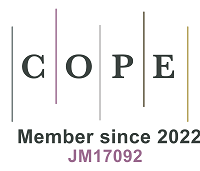REFERENCES
1. Klein, E. Y.; Van, B. T. P.; Martinez, E. M.; et al. Global increase and geographic convergence in antibiotic consumption between 2000 and 2015. Proc. Natl. Acad. Sci. U. S. A. 2018, 115, E3463-70.
2. Zhu, Y. G.; Johnson, T. A.; Su, J. Q.; et al. Diverse and abundant antibiotic resistance genes in Chinese swine farms. Proc. Natl. Acad. Sci. U. S. A. 2013, 110, 3435-40.
3. Sarmah, A. K.; Meyer, M. T.; Boxall, A. B. A global perspective on the use, sales, exposure pathways, occurrence, fate and effects of veterinary antibiotics (VAs) in the environment. Chemosphere 2006, 65, 725-59.
4. Li, S.; Zhu, Y.; Zhong, G.; Huang, Y.; Jones, K. C. Comprehensive assessment of environmental emissions, fate, and risks of veterinary antibiotics in China: an environmental fate modeling approach. Environ. Sci. Technol. 2024, 58, 5534-47.
5. Du, J.; Liu, Q.; Pan, Y.; Xu, S.; Li, H.; Tang, J. The research status, potential hazards and toxicological mechanisms of fluoroquinolone antibiotics in the environment. Antibiotics 2023, 12, 1058.
6. Li, W.; Liu, K.; Min, Z.; et al. Transformation of macrolide antibiotics during chlorination process: kinetics, degradation products, and comprehensive toxicity evaluation. Sci. Total. Environ. 2023, 858, 159800.
7. Hu, J.; Lyu, Y.; Liu, Y.; You, X.; Helbling, D. E.; Sun, W. Incorporating transformation products for an integrated assessment of antibiotic pollution and risks in surface water. Environ. Sci. Technol. 2025, 59, 2815-26.
8. Aminzare, M.; Mohammadi, M.; Hashemi, M.; et al. Residual antibiotics as an alarming health threat for human; a systematic study and meta-analysis in Iranian animal food products. J. Agr. Food. Res. 2024, 18, 101435.
9. Clark, M. D.; Halford, Z.; Herndon, C.; Middendorf, E. Evaluation of antibiotic initiation tools in end-of-life care. Am. J. Hosp. Palliat. Care. 2022, 39, 274-81.
10. Zhao, Q.; Guo, W.; Luo, H.; et al. Deciphering the transfers of antibiotic resistance genes under antibiotic exposure conditions: driven by functional modules and bacterial community. Water. Res. 2021, 205, 117672.
11. Acar Kirit, H.; Bollback, J. P.; Lagator, M. The role of the environment in horizontal gene transfer. Mol. Biol. Evol. 2022, 39, msac220.
12. Chi, W.; Zou, Y.; Qiu, T.; et al. Horizontal gene transfer plays a crucial role in the development of antibiotic resistance in an antibiotic-free shrimp farming system. J. Hazard. Mater. 2024, 476, 135150.
13. Zhou, H.; Lu, Z.; Liu, X.; et al. Environmentally relevant concentrations of tetracycline promote horizontal transfer of antimicrobial resistance genes via plasmid-mediated conjugation. Foods 2024, 13, 1787.
14. Goodarzi, Z.; Asad, S.; Mehrshad, M. Genome-resolved insight into the reservoir of antibiotic resistance genes in aquatic microbial community. Sci. Rep. 2022, 12, 21047.
15. Pu, Y.; Zhao, Z.; Li, Y.; et al. Enhanced efflux activity facilitates drug tolerance in dormant bacterial cells. Mol. Cell. 2016, 62, 284-94.
16. He, M.; Shi, J.; Liu, A.; Xu, Y. J.; Liu, Y. Antibiotic-induced gut microbiota dysbiosis altered host metabolism. Mol. Omics. 2023, 19, 330-9.
17. Zainab, S. M.; Junaid, M.; Xu, N.; Malik, R. N. Antibiotics and antibiotic resistant genes (ARGs) in groundwater: a global review on dissemination, sources, interactions, environmental and human health risks. Water. Res. 2020, 187, 116455.
18. Huang, S.; Yu, J.; Li, C.; et al. The effect review of various biological, physical and chemical methods on the removal of antibiotics. Water 2022, 14, 3138.
19. Zhang, T.; Yan, R.; Gui, Q.; Gao, Y.; Wang, Q.; Xu, S. Fine particulate matter as a key factor promoting the spread of antibiotics in river network. Sci. Total. Environ. 2024, 935, 173323.
20. Liu, X.; Lv, K.; Deng, C.; Yu, Z.; Shi, J.; Johnson, A. C. Persistence and migration of tetracycline, sulfonamide, fluoroquinolone, and macrolide antibiotics in streams using a simulated hydrodynamic system. Environ. Pollut. 2019, 252, 1532-8.
21. Bueno, I.; He, H.; Kinsley, A. C.; et al. Biodegradation, photolysis, and sorption of antibiotics in aquatic environments: a scoping review. Sci. Total. Environ. 2023, 897, 165301.
22. Mitchell, S. M.; Ullman, J. L.; Teel, A. L.; Watts, R. J. Hydrolysis of amphenicol and macrolide antibiotics: chloramphenicol, florfenicol, spiramycin, and tylosin. Chemosphere 2015, 134, 504-11.
23. Tyutereva, Y. E.; Snytnikova, O. A.; Sheven, D. G.; et al. Mechanism of UV photodegradation of fluoroquinolone antibiotic ciprofloxacin in aqueous solutions. Chemosphere 2024, 367, 143643.
24. Loureiro Dos Louros, V.; Silva, C. P.; Nadais, H.; Otero, M.; Esteves, V. I.; Lima, D. L. D. Photodegradation of sulfadiazine in different aquatic environments - evaluation of influencing factors. Environ. Res. 2020, 188, 109730.
25. Terzic, S.; Udikovic-Kolic, N.; Jurina, T.; et al. Biotransformation of macrolide antibiotics using enriched activated sludge culture: kinetics, transformation routes and ecotoxicological evaluation. J. Hazard. Mater. 2018, 349, 143-52.
26. Wang, L.; Wang, Y.; Wang, Y.; Wang, H.; Wu, H.; Gao, D. Efficient photocatalytic degradation of sulfonamides in wastewater using g-C3N4 heterostructures: a critical review. Environ. Technol. Innov. 2024, 36, 103854.
27. Luo, Y.; Xu, L.; Rysz, M.; Wang, Y.; Zhang, H.; Alvarez, P. J. Occurrence and transport of tetracycline, sulfonamide, quinolone, and macrolide antibiotics in the Haihe River Basin, China. Environ. Sci. Technol. 2011, 45, 1827-33.
28. Löffler, P.; Escher, B. I.; Baduel, C.; Virta, M. P.; Lai, F. Y. Antimicrobial transformation products in the aquatic environment: global occurrence, ecotoxicological risks, and potential of antibiotic resistance. Environ. Sci. Technol. 2023, 57, 9474-94.
29. Archundia, D.; Duwig, C.; Lehembre, F.; et al. Antibiotic pollution in the Katari subcatchment of the Titicaca Lake: major transformation products and occurrence of resistance genes. Sci. Total. Environ. 2017, 576, 671-82.
30. Chen, J.; Ke, Y.; Zhu, Y.; Chen, X.; Xie, S. Deciphering of sulfonamide biodegradation mechanism in wetland sediments: from microbial community and individual populations to pathway and functional genes. Water. Res. 2023, 240, 120132.
31. Hu, J.; Li, X.; Liu, F.; Fu, W.; Lin, L.; Li, B. Comparison of chemical and biological degradation of sulfonamides: solving the mystery of sulfonamide transformation. J. Hazard. Mater. 2022, 424, 127661.
32. Zhang, Y.; Rosado-García, F. M.; Peña, Y. P.; et al. Sulfonamide metabolites enhance resistance transmission via conjugative transfer pathways. J. Hazard. Mater. 2025, 491, 137932.
33. Xiao, Y.; Zhang, Q.; Yang, Y.; et al. Unraveling the pollution and discharge of aminophenyl sulfone compounds, sulfonamide antibiotics, and their acetylation products in municipal wastewater treatment plants. Environ. Sci. Technol. 2024, 58, 11695-706.
34. Han, J.; Xu, Y.; Xu, D.; et al. Mechanism of downward migration of quinolone antibiotics in antibiotics polluted natural soil replenishment water and its effect on soil microorganisms. Environ. Res. 2023, 218, 115032.
35. Tang, T.; Qian, K.; Shi, T.; et al. Photodegradation of quinestrol in waters and the transformation products by UV irradiation. Chemosphere 2012, 89, 1419-25.
36. Ma, B.; Zha, Y.; Yu, P.; et al. Hydrothermal nanoarchitectonics of Z-scheme g-C3N4/Bi2WO6 heterojunction with enhanced adsorption and photocatalytic activity for fluoroquinolone antibiotics removal: kinetics, mechanism and degradation pathway. J. Alloys. Compd. 2023, 952, 170061.
37. Jia, Y.; Khanal, S. K.; Shu, H.; Zhang, H.; Chen, G. H.; Lu, H. Ciprofloxacin degradation in anaerobic sulfate-reducing bacteria (SRB) sludge system: mechanism and pathways. Water. Res. 2018, 136, 64-74.
38. Wang, D.; Ning, Q.; Dong, J.; Brooks, B. W.; You, J. Predicting mixture toxicity and antibiotic resistance of fluoroquinolones and their photodegradation products in Escherichia coli. Environ. Pollut. 2020, 262, 114275.
39. Hu, J.; Lyu, Y.; Chen, H.; Li, S.; Sun, W. Suspect and nontarget screening reveal the underestimated risks of antibiotic transformation products in wastewater treatment plant effluents. Environ. Sci. Technol. 2023, 57, 17439-51.
40. Senta, I.; Kostanjevecki, P.; Krizman-Matasic, I.; Terzic, S.; Ahel, M. Occurrence and behavior of macrolide antibiotics in municipal wastewater treatment: possible importance of metabolites, synthesis byproducts, and transformation products. Environ. Sci. Technol. 2019, 53, 7463-72.
41. Senta, I.; Krizman-Matasic, I.; Terzic, S.; Ahel, M. Comprehensive determination of macrolide antibiotics, their synthesis intermediates and transformation products in wastewater effluents and ambient waters by liquid chromatography-tandem mass spectrometry. J. Chromatogr. A. 2017, 1509, 60-8.
42. Ge, L.; Cui, N.; Halsall, C.; Yang, Y.; Cao, S.; Zhang, P. Exploring the aqueous photodegradation of three ionisable macrolide antibiotics: kinetics, intermediates and photoinduced toxicity. J. Water. Process. Eng. 2024, 62, 105383.
43. Deng, X.; Jiang, Y.; Zhang, M.; Nan, Z.; Liang, X.; Wang, G. Sorption properties and mechanisms of erythromycin and ampicillin in loess soil: Roles of pH, ionic strength, and temperature. Chem. Eng. J. 2022, 434, 134694.
44. Yan, S.; Ding, N.; Yao, X.; et al. Effects of erythromycin and roxithromycin on river periphyton: structure, functions and metabolic pathways. Chemosphere 2023, 316, 137793.
45. do Rêgo, R. L.; Neves, F. P. G.; Miranda, F. M.; et al. CRISPR elements and their association with macrolide and aminoglycoside resistance genes in enterococci. Microb. Drug. Resist. 2025, 31, 75-9.
46. Wu, D.; Dai, S.; Feng, H.; Karunaratne, S. H. P. P.; Yang, M.; Zhang, Y. Persistence and potential risks of tetracyclines and their transformation products in two typical different animal manure composting treatments. Environ. Pollut. 2024, 341, 122904.
47. Li, C.; Awasthi, M. K.; Liu, J.; Yao, T. Veterinary tetracycline residues: environmental occurrence, ecotoxicity, and degradation mechanism. Environ. Res. 2025, 266, 120417.
48. Zhi, D.; Wang, J.; Zhou, Y.; et al. Development of ozonation and reactive electrochemical membrane coupled process: enhanced tetracycline mineralization and toxicity reduction. Chem. Eng. J. 2020, 383, 123149.
49. Guo, Z.; Zhang, T.; Yang, H.; et al. Unraveling tetracycline and its degradation product: Induction mechanisms of antibiotic resistance in Escherichia coli. Sci. Total. Environ. 2025, 970, 178959.
50. Yang, Y.; Lu, X.; Jiang, J.; et al. Degradation of sulfamethoxazole by UV, UV/H2O2 and UV/persulfate (PDS): formation of oxidation products and effect of bicarbonate. Water. Res. 2017, 118, 196-207.
51. Zhang, H.; Quan, H.; Yin, S.; Sun, L.; Lu, H. Unraveling the toxicity associated with ciprofloxacin biodegradation in biological wastewater treatment. Environ. Sci. Technol. 2022, 56, 15941-52.
52. Zheng, H.; Ji, Y.; Li, S.; Li, W.; Ma, J.; Niu, J. Ecotoxicity and resistance genes induction changing of antibiotic tetracycline degradation products dominated by differential free radicals. Environ. Res. 2023, 227, 115427.
53. Liu, X.; Köpke, J.; Akay, C.; Kümmel, S.; Imfeld, G. Sulfamethoxazole transformation by heat-activated persulfate: linking transformation products patterns with carbon and nitrogen isotope fractionation. Environ. Sci. Technol. 2025, 59, 5704-14.
54. Hofstetter, T. B.; Bakkour, R.; Buchner, D.; et al. Perspectives of compound-specific isotope analysis of organic contaminants for assessing environmental fate and managing chemical pollution. Nat. Water. 2024, 2, 14-30.
55. Xie, Y.; Chen, W.; Ye, Z.; Yan, J.; Yu, X.; Feng, M. Mechanistic insight into the environmental fate of highly concerned transformation products of aqueous micropollutants during the solar/chlorine treatment. Water. Res. 2025, 278, 123413.







